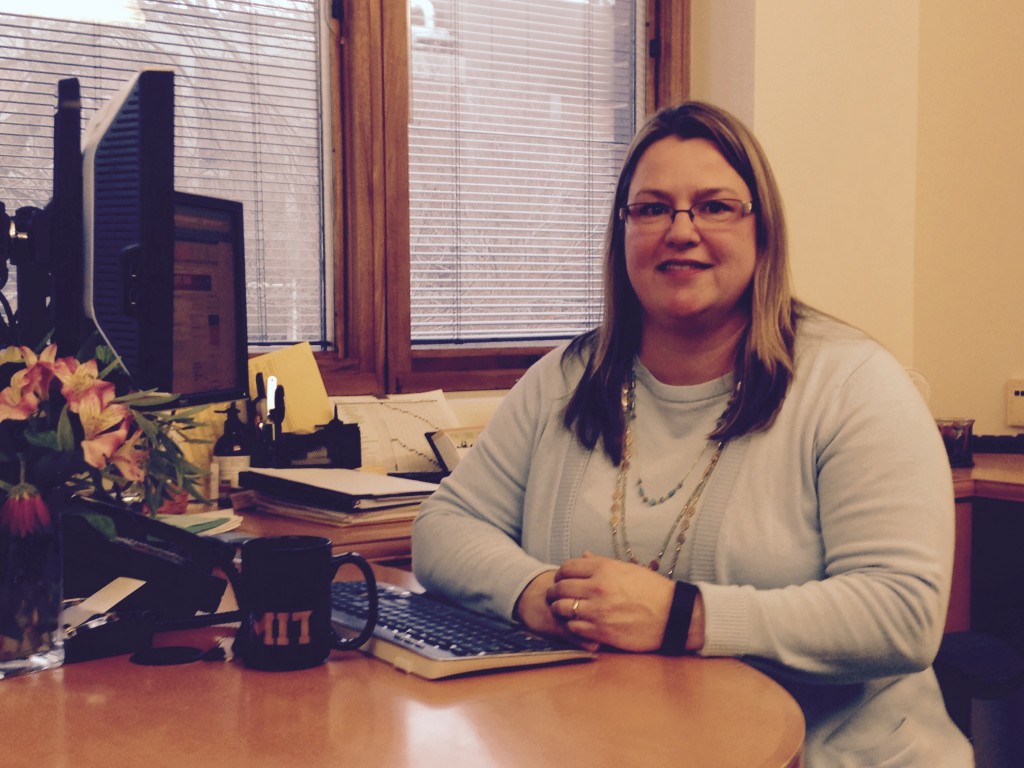Alumna Brings Community Spirit and Innovation to MIT Medical
-
-
slice.mit.edu
- 1
Filed Under
Recommended

Cecilia Warpinski Stuopis ’90 is starting her third week as director of MIT Medical, but it’s just the latest step in her integral relationship with the MIT community. As an alumna, she is a volunteer educational counselor, advisor for her sorority Alpha Chi Omega, and accreditation visitor for the Association of Independent Living Groups office—plus, she’s the spouse of an alumnus and mother of a current student.
Professionally, Stuopis comes from the Dartmouth-Hitchcock health system in New Hampshire, where she served as executive medical director for accountable care. She excited to bring her experience to MIT: “It’s a neat proposition: I’m an outsider, but I have insider knowledge too.”
Stuopis has already found that her colleagues at MIT Medical share her passion. “I really want to be connected with the community here as their new leader. There’s a strong community sense here—really nice people who love to work in healthcare and love to work at MIT.”
Stuopis hopes to develop a strong network dedicated to wellness across campus. She says, “Physical and mental health is critical to the success of anyone who’s part of the MIT community.”
Teamwork will be key both inside MIT Medical and with other departments. Her collaborative MIT experiences had a profound influence on her, particularly as a volleyball and softball player. “It all started with athletics and that sense of community you get there,” she says. “Teamwork is a huge thing on campus: teams for coursework, athletic teams, teams within labs. I think there needs to be more of a team approach to healthcare.”
The physical location of MIT Medical is not central, she says. “I know from my daughter and her friends, that it’s hard for them. We have to figure out how to take some of the services closer to where they are.”
Specifically, she hopes to broaden and deepen patients’ ability to connect and interact with caregivers. “How can we provide a model of care that patients can access when, where, and how they want? It’s going to take some creative thinking.”
Stuopis hopes to improve overall health outcomes for patients, providing more of the care that’s needed and less of what isn’t. In essence, “You’re doing the right care for the right patient at the right time every time.”
Ultimately, Stuopis hopes that MIT Medical will be aligned with the educational mission of MIT, a goal that has personal as well as professional significance. “We owe it to ourselves to be a community that nurtures the best in people: the best health—both physical and mental—the best thought, the best innovation, the best community relationships and support,” she says.
“We want to be a model for a supportive learning community.”








Comments
Mark Camenzind
Tue, 01/12/2016 1:15pm
It is very important that MIT medical be aware of M.E., Myalgic Encephalomyelitis, sometimes call more vaguely CFS, Chronic Fatigue Syndrome, that is more common than AIDS, MS, Parkinsons, and is worse prognosis than AIDS. If affects approx 2 million in US, approx 1 in 300 so affects many in the greater MIT community, esp if you include their families. This neuroimmune disease can lead to complete exhaustion and is most common chronic illness leading to inability to complete college or high school. 90% are not diagnosed or misdiagnosed, and thus mistreated, and there is no definitive cure. I know someone in greater MIT community with this disease, which is one of most debilitating diseases, often lifelong. NIH director Francis Collins announced Oct 29th, 2015 that the NIH will greatly increase funding for this disease. It is key that the MIT community be aware of this disease that can affect anyone without warning, and diagnose this correctly since no simple tests exist yet, so often misdiagnosed. Hope the MIT community can also consider researching this disease, since it has been neglected too long. Great progress is starting, see Openmedicinefoundation.org